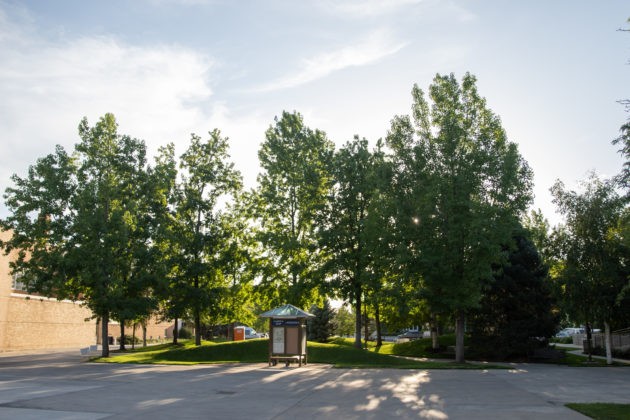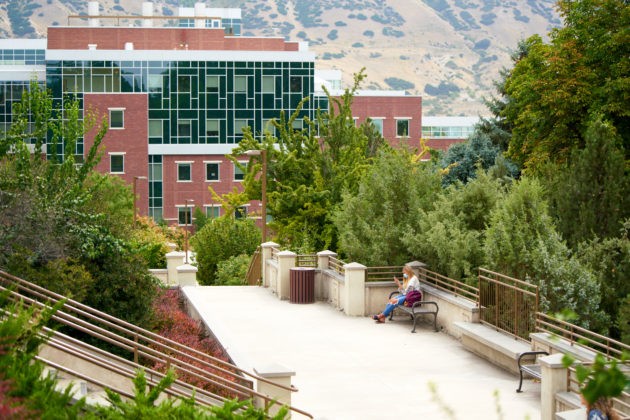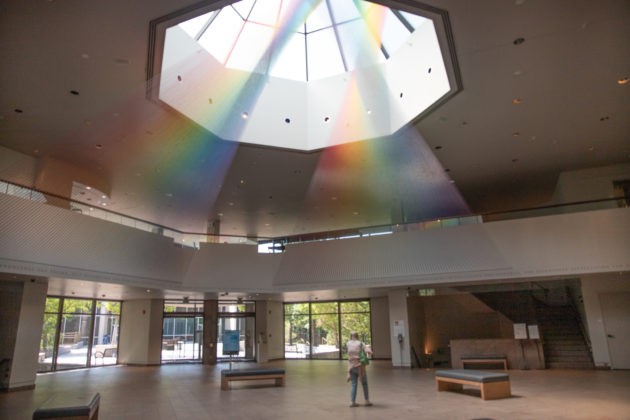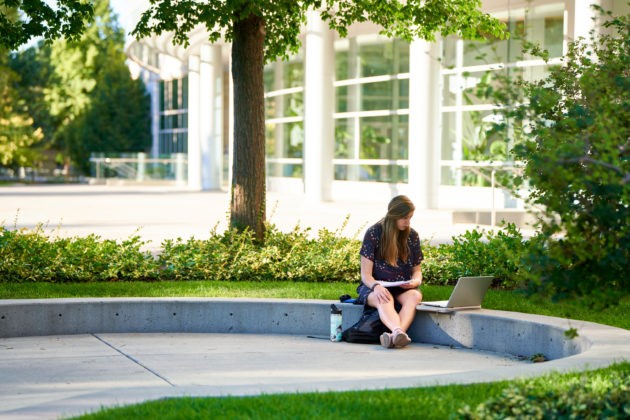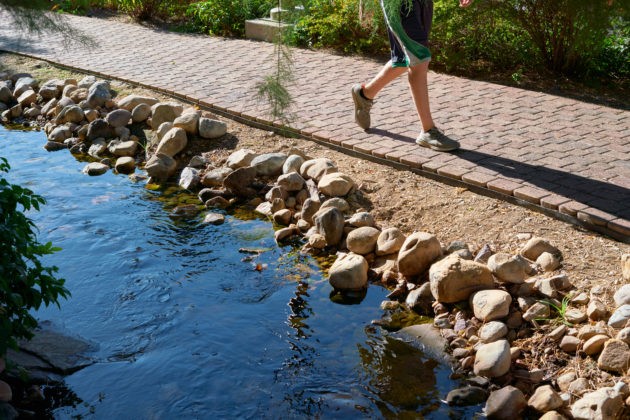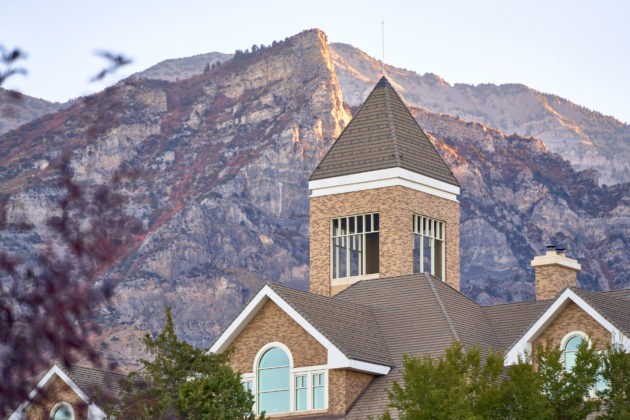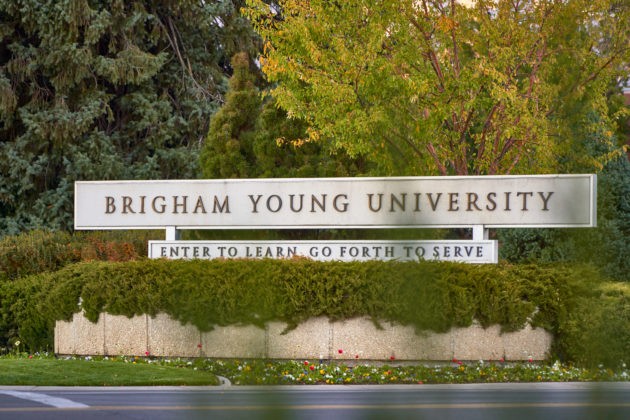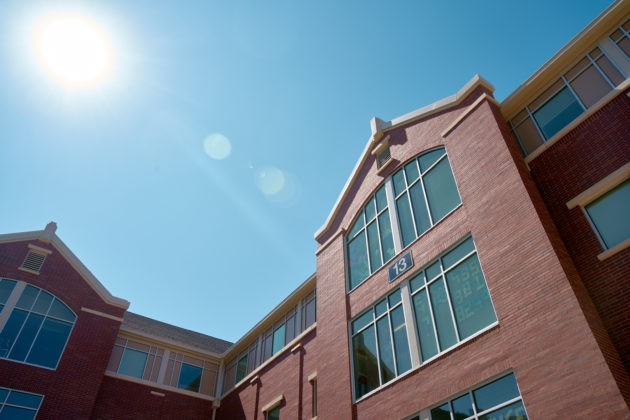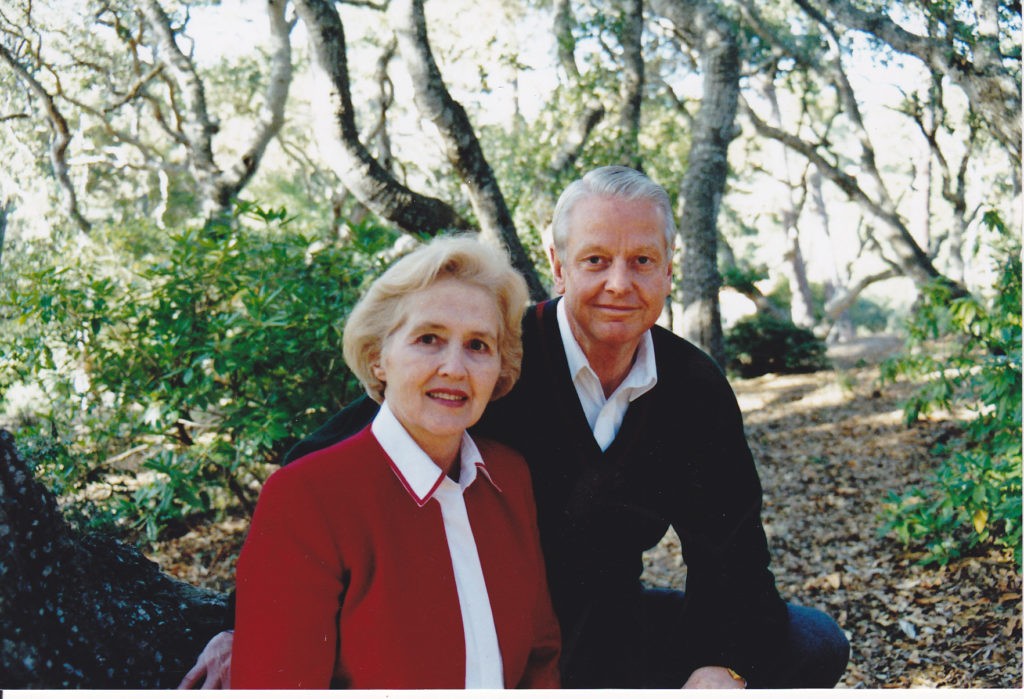
Jack Wheatley was one of the first people to show up and help whenever a need arose at BYU. He selflessly dedicated countless hours, effort and funds to improving BYU in priceless ways.
The influential BYU donor died at home on Oct. 31, 2020, after a life dedicated to service, philanthropy, discipleship, humility and love.
Family members, friends and colleagues are saddened by his death, but his impact at BYU and elsewhere will not be soon forgotten.
Wheatley’s son Charles said his father taught his family to be hardworking and faithful to the Lord and to always uplift others.
Wheatley slowly grew wealthy through his engineering and building expertise and business investments in real estate after being born a small-town farm boy.
Charles said his dad took his stewardship of resources and wealth seriously, always giving away as much of it as he could. “He always felt that the more he gave away to good causes, the more he was blessed with more resources to give away.” Charles said his father got a lot of joy and satisfaction out of doing good things and impacting people for the better.
Impacts for BYU
After a massive and successful fundraising campaign for BYU, Charles said Wheatley and his team were inspired to create a group of donors that would be supporters of BYU on an ongoing basis. In 2000, BYU formed the President’s Leadership Council.
As co-chair of the President’s Leadership Council for 10 years, it was Wheatley’s job to contact potential donors and pitch ideas to them. Charles said many of those Wheatly recruited will jokingly say Wheatley was their “most expensive” friend because he persuaded them to donate so much to the university.
Dick Oliver was one of many friends and colleagues Wheatley recruited to become a member of the council. He said Wheatley was never ostentatious with his money and instead used what he was given to bless others’ lives.
“If you want to spread your good fortune, the best way to do it is to put it into young people,” Wheatley said in 2013, showing his inclination to invest in college education systems.
“It was very obvious to everybody that his love was not only for BYU, but to do something. To do something good with what the Lord had blessed him with,” said King Husein, a close friend and fellow BYU donor.
Wheatley influenced many people to live the gospel of Christ more fully. Husein said Wheatley taught him how to live a consecrated life and that he “embodied Christlike attributes.”
Wheatley first visited BYU in the 1970s and ever since has donated significant funds to BYU for building construction, landscaping, projects and more.
According to a 2013 BYU Magazine article, Wheatley paid for thousands of trees planted on campus, built fountains and landscapes around the buildings, designed the gardens at the Jerusalem Center, and supported or founded many more BYU programs and institutions. He also sponsored construction of the Hinckley Center, BYU Broadcasting Building, Life Sciences Building, remodeling of the Joseph F. Smith Building and design of the new Heritage Halls complex.
Wheatley, according to the magazine article, also donated to BYU Idaho and Hawaii, BYU Pathways, West Point Academy, Southern Virginia University, Idaho State University, the University of Utah, and many Church history sites and temples for The Church of Jesus Christ of Latter-day Saints.
Tanise Chung-Hoon, philanthropies managing director for the Church, worked with Wheatley for many BYU projects. She said he “invests his time, talent, treasure and his testimony into every project.”
Chung-Hoon said his primary interest was in the beautification and building of BYU. She said he believed that when people are in beautiful spaces, they can accomplish their goals more effectively and magnify their talents. Which in turn, he believed, would lead people to bless those around them.
Here are some pictures of campus buildings and landscapes that Wheatley helped design, fund, or build.
“He had a vision of what a beautiful Zion campus could be,” Chung-Hoon said. He lent his leadership and design talent in addition to financial investments. Chung-Hoon said he sacrificed to help others and always encouraged those around him to do the same.
Chung-Hoon originally met Wheatley when she was a BYU student. Over the years, she grew closer to him through mentorship and work opportunities. She said she is honored and humbled to have had his mentoring influence in her life.
But for all of his charity, Wheatley refused to take credit. Charles said he was “doing it to create good,” not to get praise.
The Museum of Art
One major contribution Wheatley made to BYU was aiding in construction for the Museum of Art. Former Museum Associate Director Ed Lind said “the museum simply wouldn’t be here without Jack.”
The Museum of Art published a tribute for Wheatley on its website just four days after his passing. It says “there is no part of the BYU Museum of Art’s structure, collections, or vision that have not been informed and enriched by Jack Wheatley and his family.”

Wheatley’s wife, Mary Lois, was a trained painter who helped Wheatley understand the beauty and importance of art leading to his heavy involvement with the museum. With his farm background and her artistic background, Charles joked “my mom wanted fine art on the walls. My dad just wanted walls.”
Museum Senior Registrar Trevor Weight said Wheatley wanted to support Mary Lois’s artistic endeavors leading to his developed love for philanthropy surrounding the promotion of fine art.
Weight said Wheatley mentored Oliver in art collecting and acquisition which led Oliver to purchase and donate a famous Edward Redfield painting to the museum.
“Jack’s legacy extends not just in what he did but with who he brought in,” said Weight. This networking of philanthropists has brought many opportunities to the museum that would not have been possible without Wheatley.
“Because of his business expertise and wisdom in investing and finance, he helped to ensure the longevity and future financial health and stability of the organization,” Weight said.
Lind said Wheatley gave so much to building the museum, designing the structure, sponsoring art shows, assisting in exhibition planning, participating in the museum leadership council and buying and donating art to BYU, but he never wanted to be given credit for it.
Lind said Wheatley did so much for the museum that it could be named after him, but Wheatley would never have allowed it. Lind said he has never met anyone else that has the same amount of humility, graciousness, and elegance the Wheatleys had.
The Bethesda painting
During the 10 year museum anniversary celebration, Wheatley said the best investment he ever made was purchasing the iconic masterpiece Christ Healing the Sick at the Pool of Bethesda by Carl Heinrich Bloch. Since being donated to the museum in 2001, the Bethesda painting has been permanently on display.

The masterpiece was unveiled at the 10 year celebration for the museum, and Wheatley intended on remaining anonymous in his gift. After much persuasion by Campbell Gray, the museum director at the time, Wheatley finally relented. Gray knew that if Wheatley associated his name with the donation, he would inspire others to donate as well.
“When an institution is able to put a name to a gift, that institution has a greater capacity to get gifts from others,” Gray said. Sure enough, Gray said once Wheatley’s name was associated with his gift, many other donors started contributing to the museum.
Both Weight and Oliver said even as Wheatley’s wealth and status grew, it never impacted his ability to treat everyone equally. When Wheatley visited the museum, Weight said he didn’t care if you were the director or the student custodial worker. “Everybody was important to Jack.”
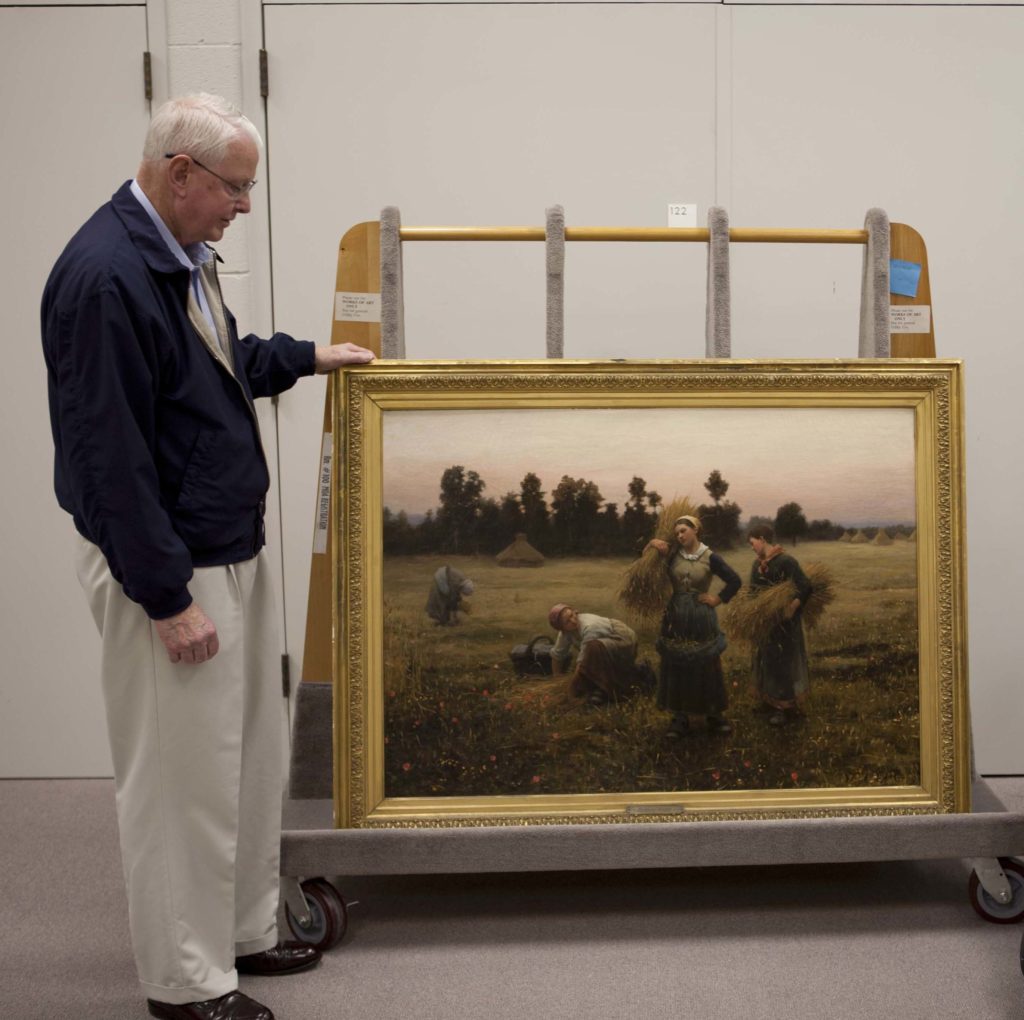
Jack Wheatley looking at “The Harvesters” by Daniel Ridgway Knight, a painting he gifted to BYU’s Museum of Art in 2011. (Trevor Weight) 
Jack and Mary Lois walking outside BYU’s Museum of Art just after the opening in 1993. (Charles Wheatley)
The Wheatley Institution
Another large impact Wheatley made was founding the Wheatley Institution, located in the Hinckley Center on campus. Wheatley found inspiration from the Hoover Institute at Stanford which was a think tank focused on public policy issues. The Wheatley Institution is not politically focused like Hoover, but rather it seeks to elevate the conversation and raise awareness of the core institutions that sustain society.
Families, civic virtue, and the place of religion in civil society were the three main pillars Wheatley charged the institution to emphasize. The institution has brought in scholars and experts from all over the world with diverse backgrounds to enrich students’ lives and foster dialogue on these societal values.
“Our goal is to hopefully make connections that will sustain really great intellectually rigorous conversation that make family work, civil society work and religion as a core institution in society work,” said Wheatley Institution Assistant Director Emily Reynolds
“The greatest gift of working at the Wheatley Institution has been getting to know the heart of Jack Wheatley,” Reynolds said in a heartfelt tribute to Wheatley.
She said she hopes people will be inspired by Wheatley’s Christlike love and will push forward in building the kingdom of God like he did.
“And that is why, when the tears are dry, we will go on seeking to do the good he always believed we could do,” she said.

